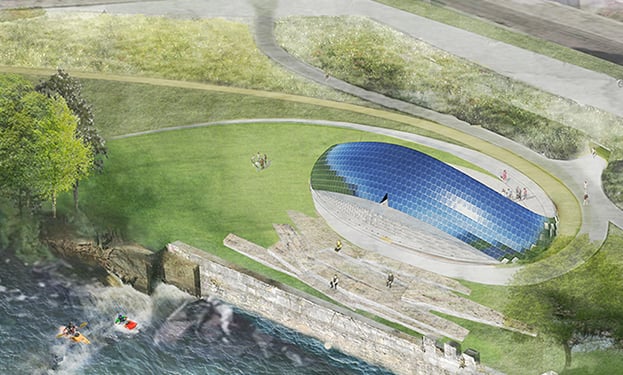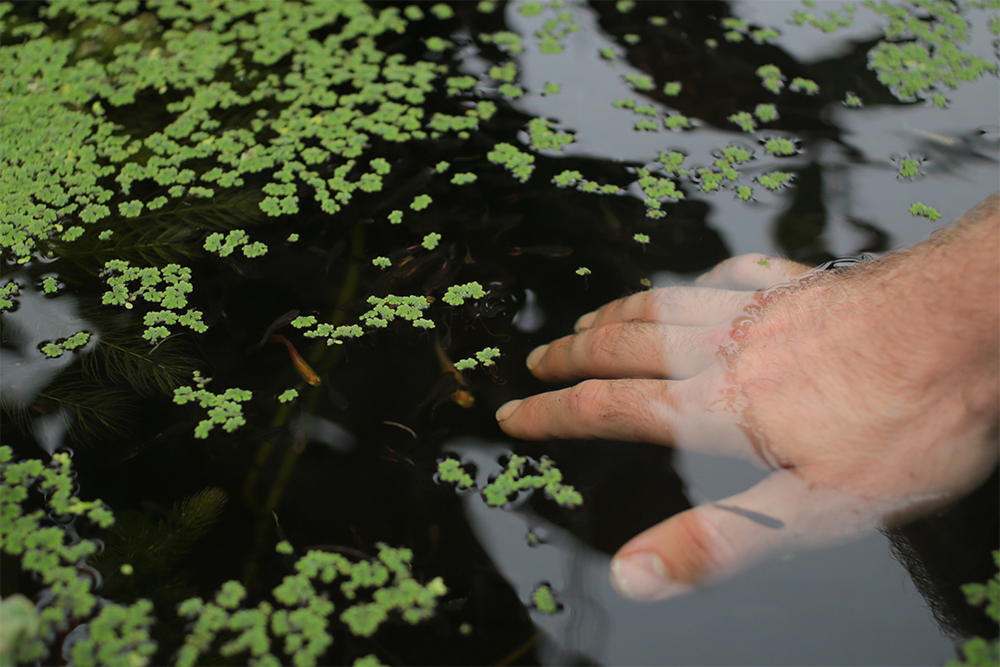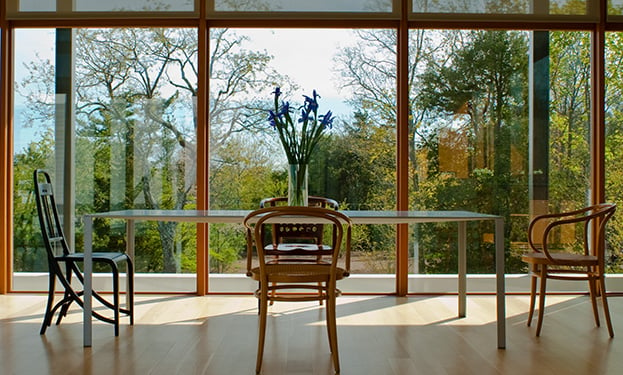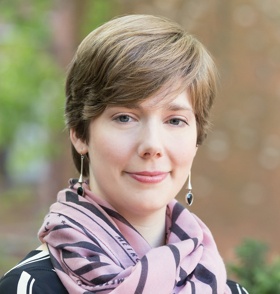Would it surprise you to learn that in the state of Connecticut (just 5,543 square miles) there are over 4,000 dams?
Awareness of the challenges and problems of aging dam infrastructure – many of which are privately owned – has grown in recent years. Not only are there safety risks and maintenance costs, but even small dams that are one or two feet high can pose significant barriers to fish migration and healthy habitats in our rivers. The New York Times recently highlighted a growing push throughout the Northeast to remove obsolete dams where possible, and the CT Examiner reported about the challenges faced by private owners in Connecticut and efforts to remove dams here specifically.
In our Rio Illuminado project on the Willimantic River for the Willimantic Whitewater Partnership, the plan is to remove a dam and restore the natural whitewater cascades to benefit both the natural river habitat as well as community fitness and health.
However, for dams where removal is not viable, there is still a way to restore migration routes for fish species that historically traveled upstream or downstream to spawn. “Fish ladders,” or fishways, are waterway structures that redirect fish from the base of a dam and give them an alternate route to the upper level. The design and engineering of fish ladders vary widely, depending on fish species, site constraints, water flow, and other factors.
Pirie Associates got a close-up peek at a new fish ladder under construction close by in North Branford, CT. Lindsay Suter, our longtime collaborator and fellow sustainability advocate, invited us to see the fish ladder going in at the Pages Millpond Dam on Farm River. He has been pushing for its construction for over 14 years! Providing free fish passage up to Pages Millpond will nearly double existing riverine and spawning habitats in the Farm River. Once complete, they anticipate this fish ladder will help several thousand fish bridge the 10-foot-high drop each year, including blueback herring, alewife, and trout.
We are excited to see the hard work of Lindsay and others bear fruit! Any effort we can make to improve habitats is effort well spent. We are looking forward to seeing the fish ladder in action once it is complete.
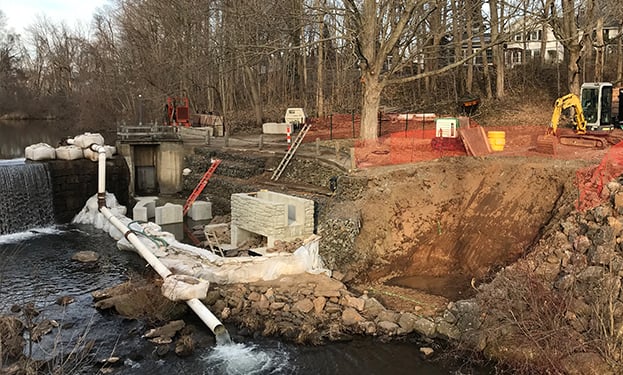
The concrete entrance structure (visible here) will redirect fish from the base of the dam up the more gradual fishway. At the top of the fishway will be a turning pool and channel that switches back to the pond.
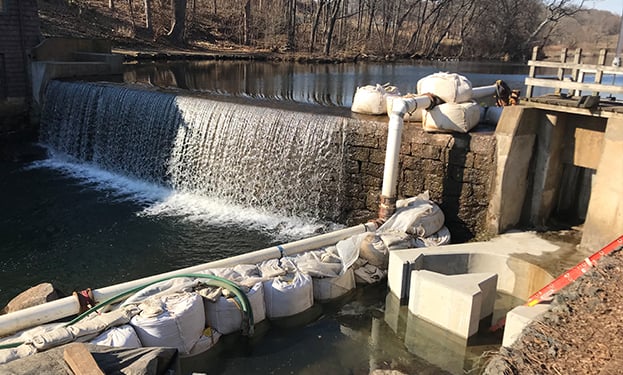
The concrete entrance structure and midpoint resting pool are in place behind a temporary cofferdam, waiting for a fishway connection. Excavation continues; the turning pool and channel toward the pond will be next

